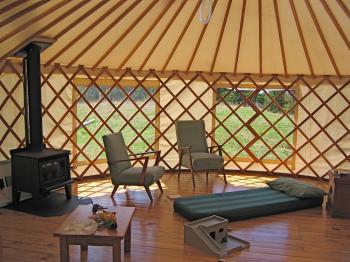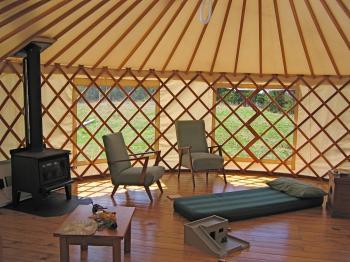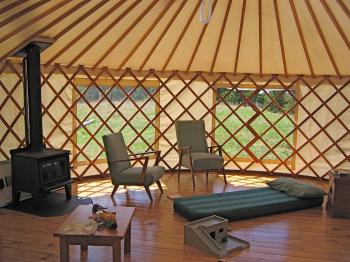Fancy living in a tent? Yurts are gaining popularity as more and more people chose the traditional abode of Mongolians to live, work and play in.
Circular in design, the space creates an energy flow that cannot be equalled in a room with corners. There is an airiness added by the light coming in through the outer canvas and higher roof. Windows and doors function easily, and you can have all the conveniences without compromising efficiency.
In summer, simply lift the centre roof panel to help keep things cool, and enjoy a bit of star-gazing at the same time.
The ability to heat a yurt quickly is unbelievable—add options of wool lining and a pot-belly stove inside, and you have a cosy winter in any temperature.
Made of cedar wood framing and a poly-cotton canvas outer, yurts are versatile, portable and easily erected—some yurt dwellers boast that they can now put one up in half an hour.
Every metre in diameter increases the floor space tremendously. A five-metre diameter yurt gives 19.7sq metre floor area, while seven meters in diameter yields a 38.6 sq metre floor area.
Yurts: Stylish and Earthy Abodes
Fancy living in a tent? Yurts are gaining popularity as more and more people chose the traditional abode of Mongolians to live, work and play in.

A yurt with an oak floor invites serenity and class. Photo courtesy of jaiatipis.com

Charlotte Cuthbertson
Senior Reporter
|Updated:





